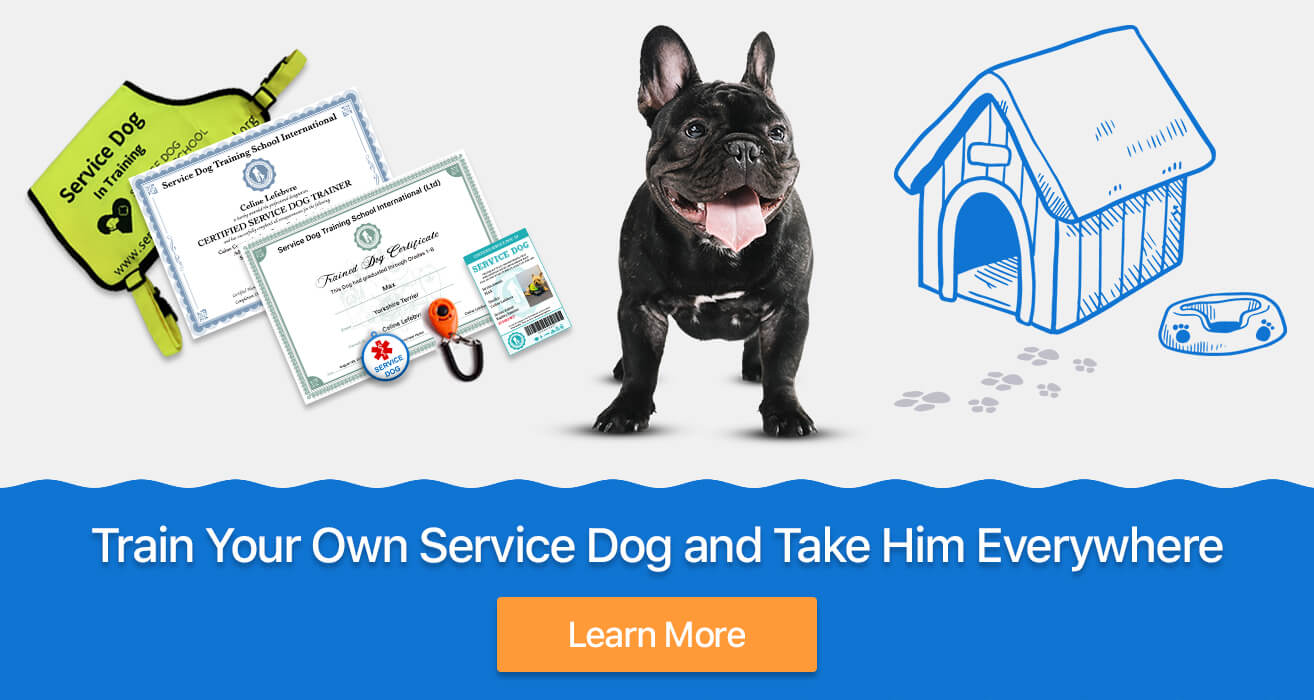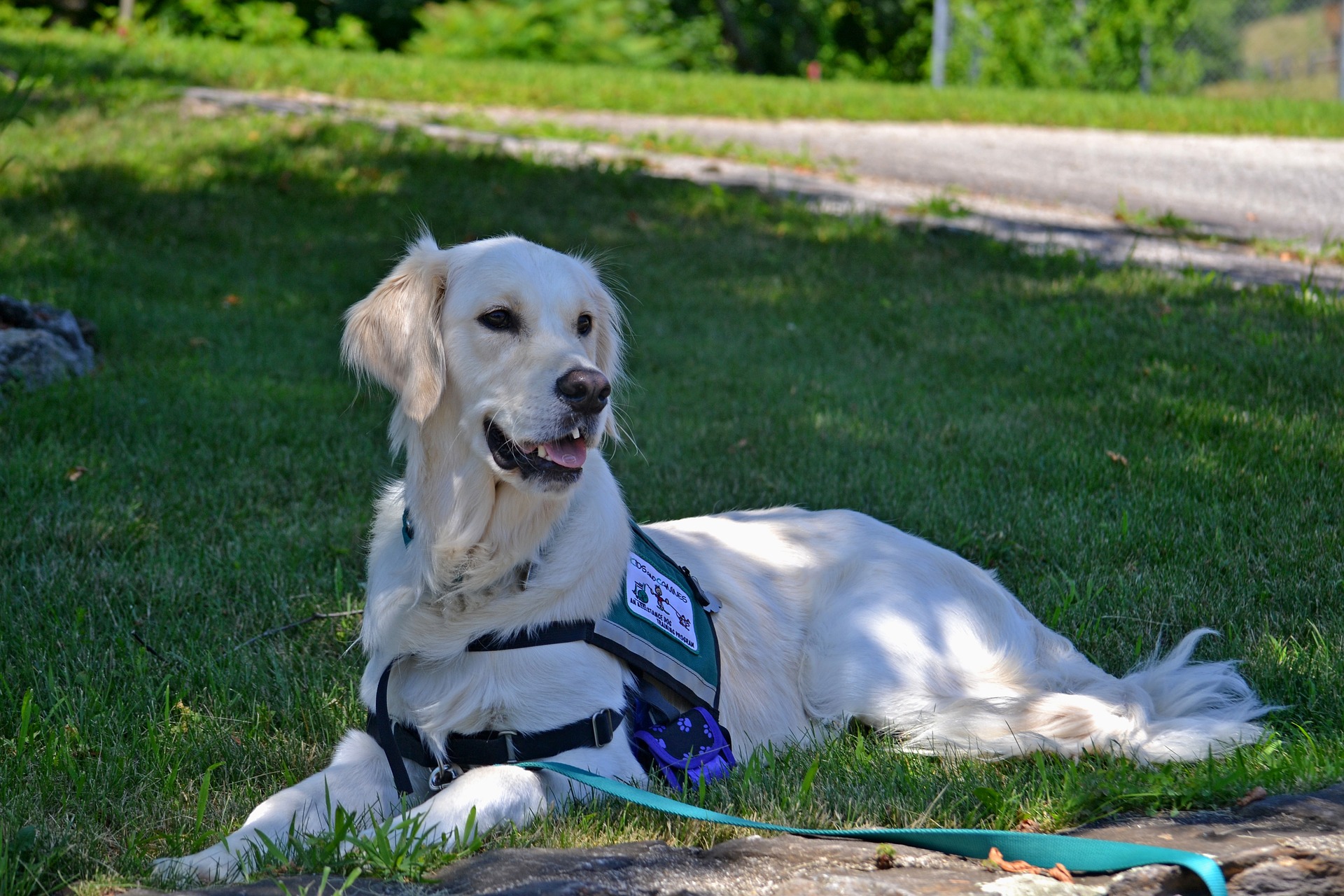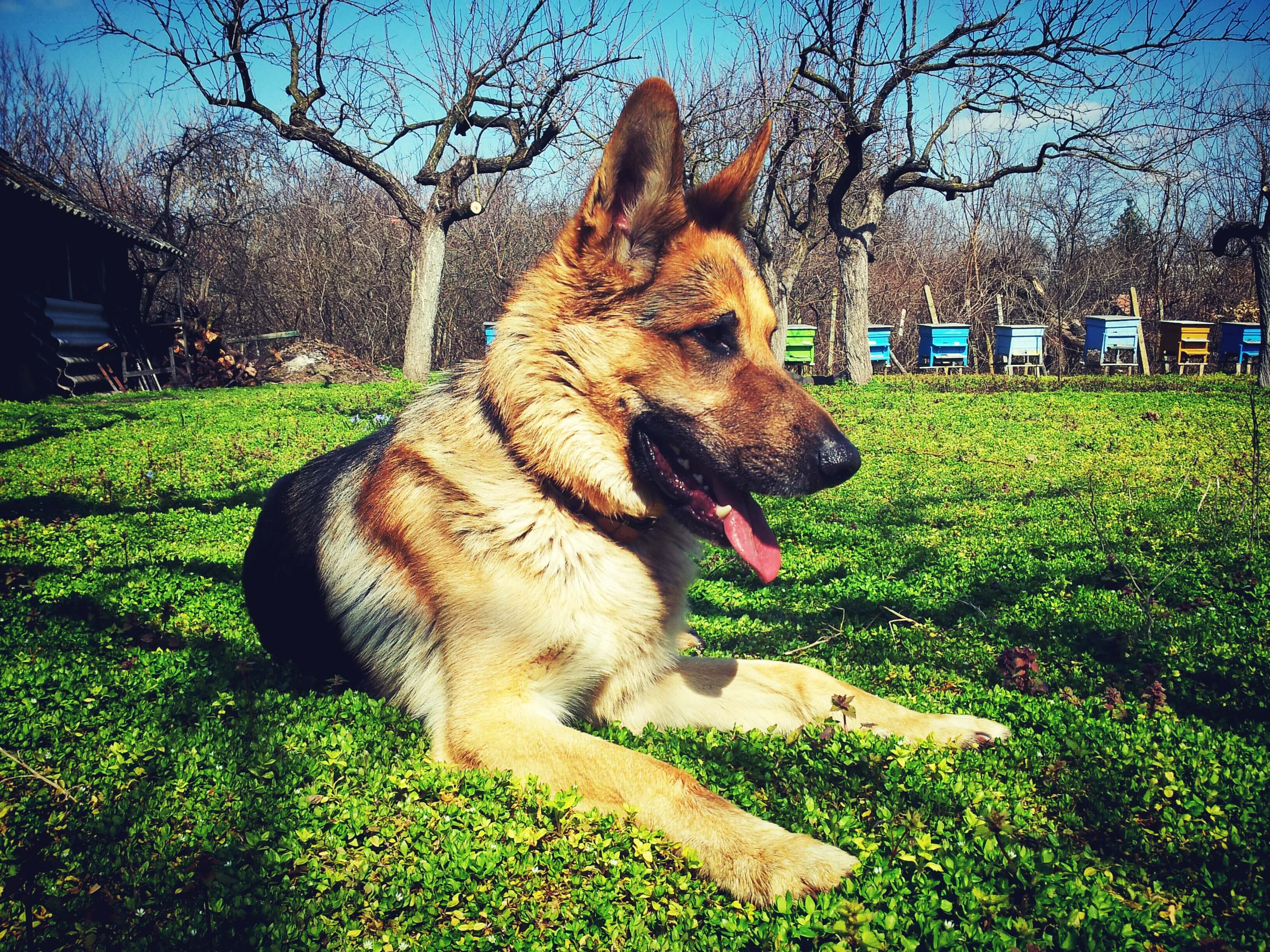
Service dogs (sometimes referred to as assistance dogs) are trained to perform everyday tasks for a person with a disability. This can range anywhere from sensory (like blindness or hearing), to physical, neurological, and psychiatric. Service dogs can help people overcome limitations caused by the disability, increase their independence, and achieve a better quality of life.
Below we’ve listed everything you need to know to get a service dog. It can be well worth it for an individual in need.
What Are Service Dog Requirements?
If you plan to get a dog, or you already have a dog that you want to train to become a service animal, below are the requirements associated with owning a service dog:
1. A person is qualified for a service dog if they have a physical or mental disability.
2. A service dog must be under the control of its handler.
3. A service dog is trained to perform specific tasks that assist the handler.
4. When it is not apparent what service an animal provides, these two inquiries are allowed to ask the handler. (1) is the dog a service animal required for a disability, and (2) what task has the dog been trained to perform.
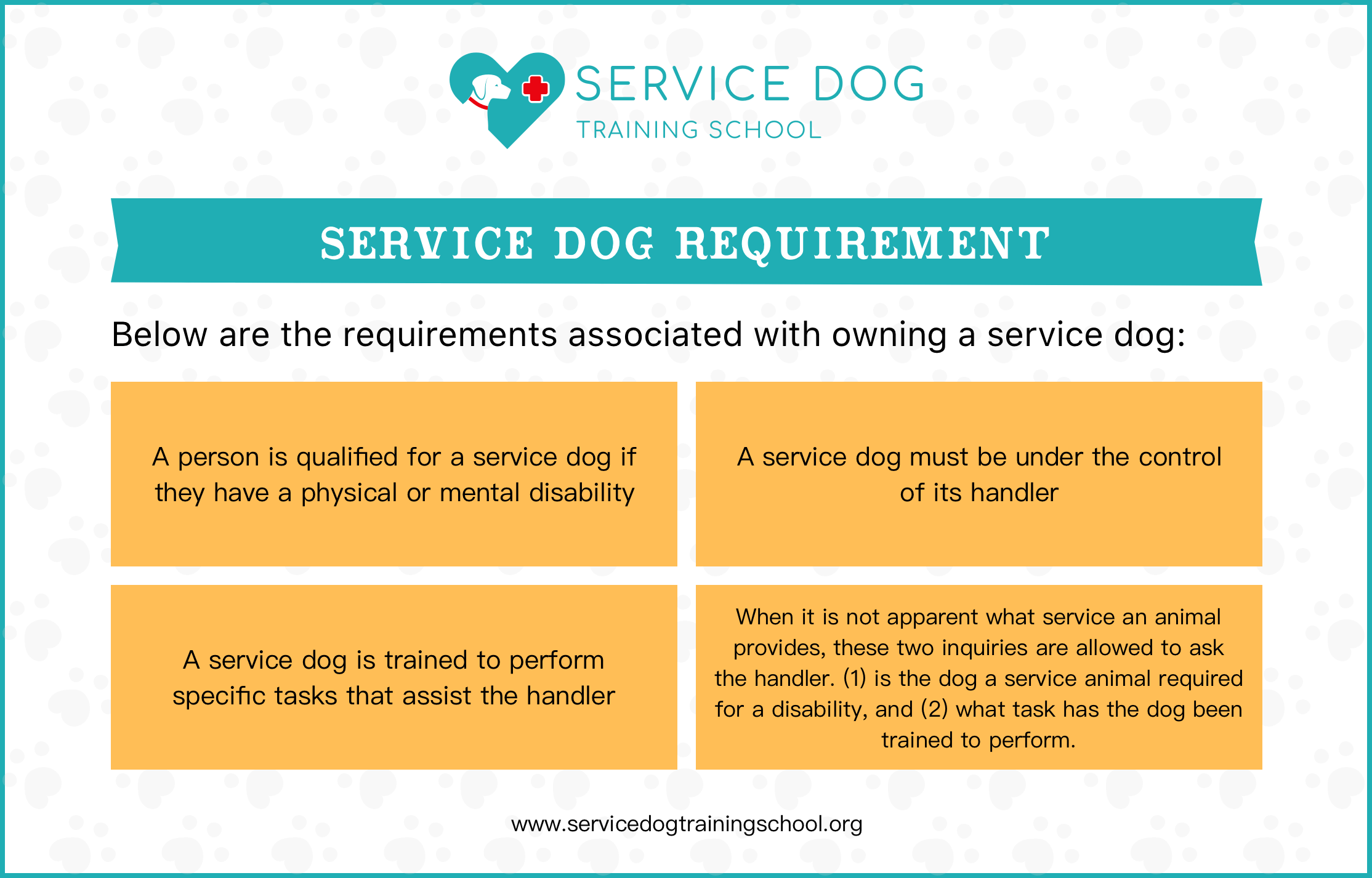
How To Make Your Dog Become a Service Dog: THE OVERALL PROCESS
We will put you in the right direction and let you know how to make your dog become a qualified service dog in this step-by-step guide.
1. Determine The Best Dog Breed For You
2. Find a Service Dog Provider or Train Your Dog Yourself
3. Service Dog Training
4. Public Access Test
5. Service Dog Certification
Step 1: Determine The Best Dog Breed For You
Service dogs are trained to meet very individualized requirements for their companion. Once you have decided to get a service dog, the next task is to determine the appropriate breed.
What Breeds Make the Best Service Dogs?
Any breed! Any dog breed with proper training can be suitable for service work. Under ADA rules an establishment cannot discriminate against a service dog solely because it is a certain breed or size.
Breeds like Golden Retrievers, Labrador Retrievers, and German Shepherds are most popular when people consider getting service dogs because of their preferred temperament and trainability.
The temperament of an ideal service dog:
• Calmness
• Alertness
• A willingness to please
• Ability to learn information
• Capability of being socialized to different situations and environments
• Reliability in performing repetitive tasks
Dogs that are aggressive or easily startled may not be suitable for service dog works until their public temperament improves.
When you are choosing a service dog candidate, it is important to be aware of what disability the dog is being trained to assist. Someone needing a dog to help them with mobility may need a larger breed, while a small-sized dog could make an excellent diabetes alert service dog.
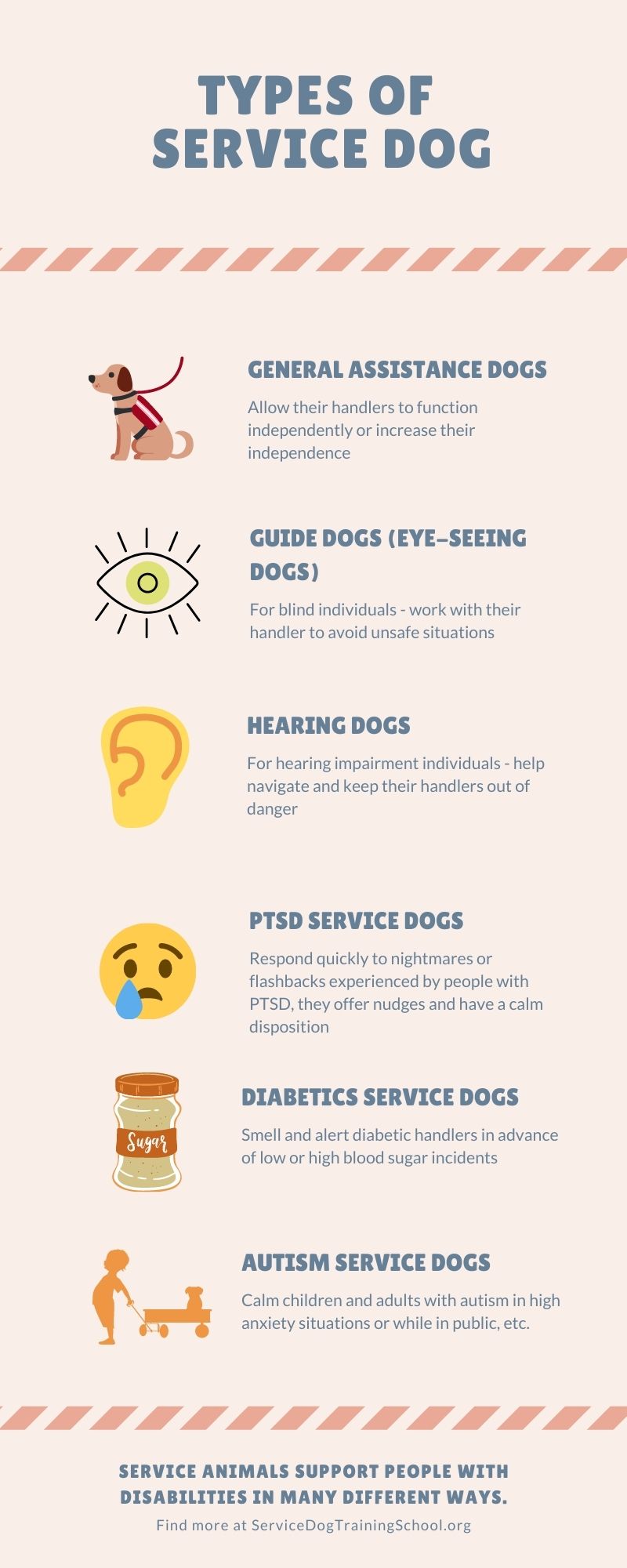
What About the Age of A Service Dog Candidate?
There is no strict age limit for Service Dogs. Whether a dog will be a recognized service dog in public depends on many different factors. In general, dogs should be at least 6 months old and past the puppy phase. Normally, dogs under 3 years old will be able to provide a reasonably long duration of service and receive the appropriate training required to become a service dog.
It’s important to know your dog’s condition to prevent adding strain to a service animal’s health and also to ensure the dog is up to the tasks it will be trained for.
All service dogs should also be neutered so that males are less aggressive and females don’t face working when in heat.
While this might seem like a lot to factor into your decision, don’t worry. You can also seek advice from your doctor and a vet, who may help you find out the best candidates for your specific condition.
Step 2 Find a Service Dog Provider or Train Your Dog Yourself
Some for-profit or non-profit organizations train service dogs and then put them up for adoption after training is complete. A trained service dog meets very individualized needs for their companion. Because they’re trained to such a high degree, service dogs can be expensive and the waiting lists for a perfect match can be as long as years. You can expect to buy a service dog for between $15,000 and $50,000 upfront. The specific amount will be determined by the breed of the dog and the types of training it gets.
Under ADA rules, your service dogs do not have to be trained by these organizations, agencies, or professional individuals. If you already have a dog that you want to train to become a service animal, it makes sense financially and in terms of time that you train your own service dog with the help of specific instructions.
Step 3 Service Dog Training
Each service dog/handler team is individually trained to meet the unique needs of the handler. No matter how many skills your dog needs to learn, the whole training process can be a challenge.
Most of your time will spend on training. According to the International Association for Assistance Dog Partners (IAADP), service dogs or assistance dogs should receive a MINIMUM of 120 hours of training.
If you do not know what you are getting into before committing to this process, the Certified Intensive Service Dog Training Course is highly recommended. This course will take you step-by-step through the process of training your Service Dog, with one-on-one help from your individual trainer assigned to you, so you can successfully train your own service dog.
The Benefits of Training Your Service Dog With SDTSI:
• Learn to train like a professional.
• Build a relationship with your service dog as you train.
• Get one-on-one support from professional instructors.
• Receive certificates of completion.
• Start instantly and learn at your own schedule.
Step 4 Public Access Test
As a Service Dog, your animal assistant can accompany you to all publicly accessible areas, including restaurants, stores, airports and airplanes, theaters, parks, etc. Hence, public access is one of the most important stages in which the service dog learns how to work as part of a team and look out for the needs of the handler. Various agencies or organizations set up Public Access Test to help you understand the commands and behaviors a trained service dog should obey and follow, and then you'll be confident that your dog is manageable in public.
Here is a list of criteria your service dog should meet before you take him to the public:
• Focus on the handler.
• Be gentle and stable without fear or aggression toward other animals, or humans.
• Remain quietly by their handler’s side.
• Sit down or lie down quietly on the floor next to the handler.
• Walk nicely on a leash.
• Ignore distractions, like other dogs, food, or strange sound, unless it is part of the task.
• Respond fast to the commands, and instructions of the handler.
• No sniffing behavior unless permitted to do so.
Step 5 Service Dog Certification
In the US, certification of service dogs is not necessary under the ADA, but proof of training may be helpful down the road, so keep records. In Canada, certification for public access makes life much easier. In the UK, only the well-trained and certified service dogs qualify to enter places where animals are prohibited or when accompanying owners by taxi or airplane.
Once you have completed the Certified Intensive Service Dog Training Course with a passing grade, you will receive a Certificate of Completion and your dog partner will be certified as a Service Dog with all the training records, to identify your dog as a service dog.




